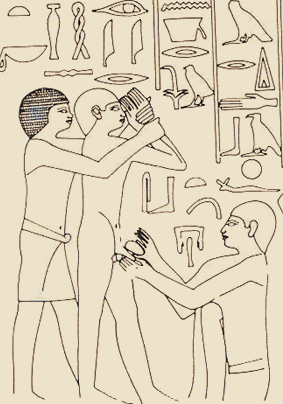 Circumcision, which substantially lowers HIV risk in men, also dramatically changes the bacterial communities of the penis, according to a new study in the journal PLoS ONE. The findings could lead to new non-surgical HIV preventative strategies for the estimated 70 percent of men worldwide who, because of religious, cultural or financial barriers, are not likely to become circumcised.
Circumcision, which substantially lowers HIV risk in men, also dramatically changes the bacterial communities of the penis, according to a new study in the journal PLoS ONE. The findings could lead to new non-surgical HIV preventative strategies for the estimated 70 percent of men worldwide who, because of religious, cultural or financial barriers, are not likely to become circumcised. The researchers behind the study speculate that these bacterial changes may also be associated with earlier observations that women whose male partners are circumcised are less likely to develop bacterial vaginosis, an imbalance between good and harmful bacteria. "[The new findings have] important public-health ramifications," said study co-author Dr. Lance B. Price, of The Translational Genomics Research Institute (TGen).
This new study is part of a larger effort to study and describe the "human microbiome" - the microbes that exist collectively on and in the human body. Other projects are focused on microbiomes involving the skin, nose, mouth, digestive and female genitourinary tract. Jointly, the goal of these projects is to define the various roles of microbes in human health and disease.
In investigating the impact of male circumcision on the penis microbiome, the team from TGen and the Johns Hopkins Bloomberg School of Public Health found for the first time that circumcision significantly changes the bacterial community of the penis. Significantly, TGen's analysis of more than 40 types of bacteria suggests that the introduction of more oxygen following circumcision decreases the presence of anaerobic (non-oxygen) bacteria and increases the amount of aerobic (oxygen-required) bacteria. Anaerobic bacteria, which cannot grow in the presence of oxygen, have been implicated in inflammation and a number of infections affecting both men and women.
The researchers note that several mechanisms for how circumcision reduces HIV infection have been proposed:
- Circumcision reduces the amount of mucosal tissue exposed to vaginal secretions during heterosexual intercourse and thus may reduce the potential interactions between the virus and its target immune cells.
- Circumcision results in a process called keratinization, whereby the top layer of the inner foreskin becomes thicker, which may provide additional protection for the underlying target immune cells.
- Circumcision-associated physiological changes of the penis - including lower moisture and oxygen availability around the head of the penis - may reduce the number of pro-inflammatory anaerobic bacteria that could make the target immune cells more vulnerable to HIV infection.
The team believe that these may be connected. "These potential explanations are not mutually exclusive and may work in concert to reduce HIV risk. The reduction in the putative anaerobic bacteria after circumcision may play a role in protection from HIV and other sexually transmitted diseases," Price concluded.
The researchers plan to conduct more studies to determine whether specific bacteria are associated with increased HIV risk and if such bacteria can be eliminated using non-surgical strategies.
Related:
New studies strengthen circumcision's role in AIDS prevention
Circumcision found to help prevent HPV infection
The Case For Penis Pruning
Source: The Translational Genomics Research Institute

